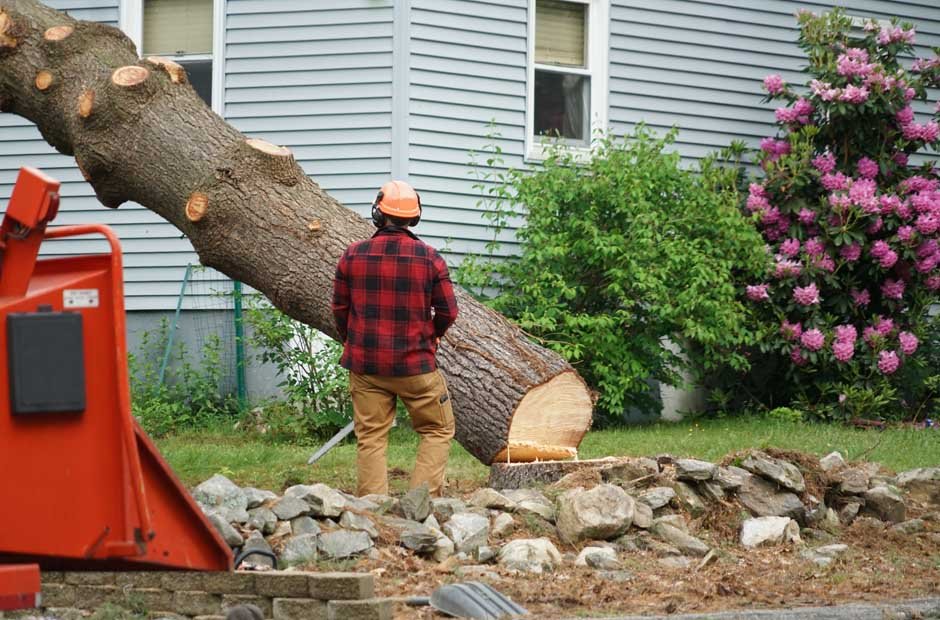Every tree care company offers tree removal services. However, some instances qualify as regular tree removal while others are emergencies. Emergency tree removals are those that need to be done urgently to prevent or minimize hazards. For such services, you should call Portland’s top tree service company.
But what situations or scenarios qualify as emergencies? See some below.
Table of Contents
Fallen Tree(s)
Trees can fall for many reasons, including due to age, disease or pest infestation, weakness, weak roots, heavy storms, and other reasons.
Tree falls can be equally dangerous, as they threaten homes, vehicles, and lives in their path. In most cases, tree falls are preceded by a leaning structure, which requires immediate attention.
It is important to contact your local emergency helpline when you notice a leaning or falling tree. Alternatively, you can contact a trusted tree service company that provides emergency tree removal services.
You should avoid approaching leaning or falling trees as they are a hazard best left to the professionals. It’s worse if those trees are located close to power lines, utility infrastructure, homes, parking lots, or other areas where they can cause significant danger.
Ensure to contact a professional tree company or 911 for help.
Severe Weather Condition
Severe storms, including hurricanes, tornadoes, and heavy winds, can cause extensive damage to trees. Broken or hanging branches, uprooted trees, and dangerously leaning trees are all examples of storm-related emergencies that require immediate attention.
Leaving affected trees without attention can put lives and properties at risk, which is why you should act fast by contacting an emergency tree removal company.
Such companies have the experience and tools required to either brace the tree (if leaning but healthy) or remove the tree (if at a higher chance of falling over and damaging properties).
Diseased Trees
Trees that are affected by severe diseases or infections may become weak and structurally compromised. Visible signs of disease, such as cankers, dieback, or extensive leaf loss, can indicate a serious problem.
Diseases are not enough reason to have your trees removed or fallen. It’s best to speak to an arborist or tree service professional, inspect the tree, and determine what needs to be done. Some diseases can be treated, or affected parts may be trimmed off to prevent further spread.
However, extensive or severe diseases are a major indication of a huge problem waiting to happen. In such cases, or in cases where the diseases are untreatable, it’s best to have the tree removed to prevent further spread and associated safety concerns.
Decaying or Rotting Trees
Trees with significant decay or rot may become unstable and prone to sudden falls. If large portions of the trunk or major branches show signs of rot, the tree’s structural integrity may be compromised, making it a potential hazard.
Such cases as this may warrant the removal of your tree to prevent hazards.
Insect Infestation
Certain insect infestations caused by beetles, aphids, moths, and termites can weaken trees or kill them. Weak or dead trees are a significant hazard to homes and their surrounding areas, especially because they can be tilted over by heavy winds or due to weakness.
Although some insect infestations can be treated, others may be too bad that the tree requires removal. Ensure to contact a tree service company to inspect the problem and an arborist to determine whether your tree can be treated.
Root Damage
Tree roots are the anchor structure to the ground. Once the roots are damaged or exposed, the tree becomes vulnerable and exposed. In addition to exposure, trees with extensive root damage, whether due to construction activities, soil compaction, or disease, can become unstable and prone to falling.
Some of the visible signs of root damage may be displayed in the health of the leaves and tree trunk. You can also check for symptoms like leaning or tilting. All these are tell-tale signs of an impending problem and often require immediate attention to avert disasters.
Dangerous Overhangs
Trees with large, overhanging branches that are dead, weak, or too close to structures or utility lines pose significant risks. It’s recommended to contact an emergency tree removal company if your tree’s branches are in danger of falling onto a building, road, or power lines.
Upheaval or Lifting
Tree upheaval or lifting isn’t as common as many other tree emergencies. Although it is similar to exposed tree roots, this type of symptom is often accompanied by a leaning or destabilized tree that is at risk of falling over.
Ensure that such development is responded to by an emergency tree removal to safeguard lives and properties.










